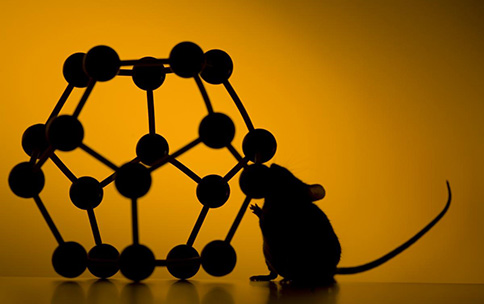
Gene “essentiality” is the requirement of a gene for an organism’s survival. Understanding how “essential” a gene is can expand our understanding of diseases and problems related to when something goes wrong with those genes. Researchers from the Common Fund’s Knockout Mouse Phenotyping Program (KOMP2) , part of the International Mouse Phenotyping Consortium (IMPC), developed a new way to determine gene “essentiality.” It is designed to offer researchers, including clinical researchers, an easy-to-use method to assist in human disease gene discovery.
The IMPC is “knocking out” all protein-coding genes in the mouse genome in an attempt to understand their function. As part of this effort, they developed and validated a “Full Spectrum of Intolerance to Loss-of-function” (FUSIL) system. The system categorizes genes based on mouse phenotyping data they are generating combined with human cell data from other research efforts. The resulting system is a “gene essentiality” resource that can be used for both animals and humans. FUSIL consists of five mutually exclusive categories, ranging from those necessary for survival to those where a gene deletion has no noticeable effect. Interestingly, known human disease genes, especially disorders that start early in life, were overrepresented in FUSIL’s “developmental lethal” bin. Taking advantage of this finding, this categorization was applied to datasets from screened developmental disorder cases from three independent disease sequencing studies in humans. The researchers were then able to predict novel candidate genes for some developmental disorders in unsolved clinical cases. Overall, the new FUSIL binning system offers clinical researchers an easy-to-use method when assessing candidate disease genes for patients.
Reference
- Human and mouse essentiality screens as a resource for disease gene discovery. Cacheiro, P., V. Muñoz-Fuentes, S. A. Murray, M. E. Dickinson, M. Bucan, L. M. J. Nutter, K. A. Peterson, H. Haselimashhadi, A. M. Flenniken, H. Morgan, H. Westerberg, T. Konopka, C.-W. Hsu, A. Christiansen, D. G. Lanza, A. L. Beaudet, J. D. Heaney, H. Fuchs, V. Gailus-Durner, T. Sorg, J. Prochazka, V. Novosadova, C. J. Lelliott, H. Wardle-Jones, S. Wells, L. Teboul, H. Cater, M. Stewart, T. Hough, W. Wurst, R. Sedlacek, D. J. Adams, J. R. Seavitt, G. Tocchini-Valentini, F. Mammano, R. E. Braun, C. McKerlie, Y. Herault, M. H. de Angelis, A.-M. Mallon, K. C. K. Lloyd, S. D. M. Brown, H. Parkinson, T. F. Meehan and D. Smedley. Nat Commun 11, 655 (2020).


